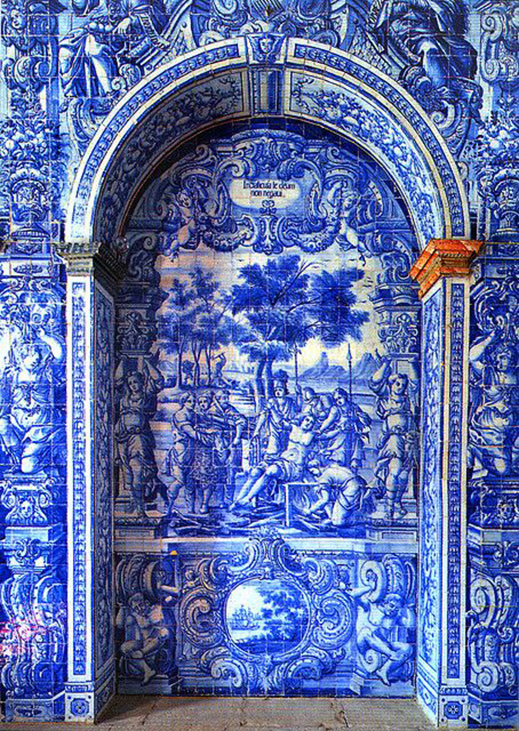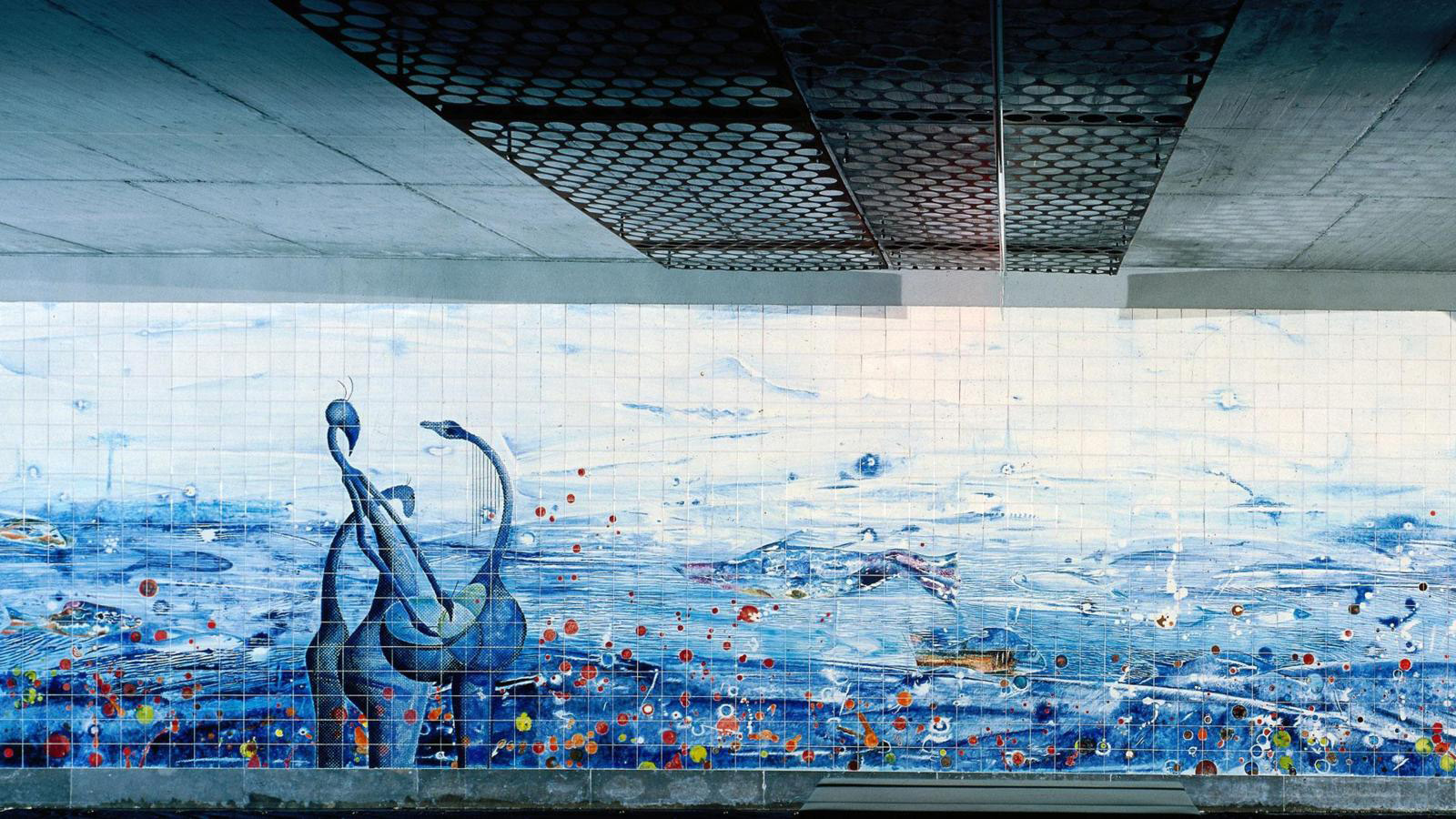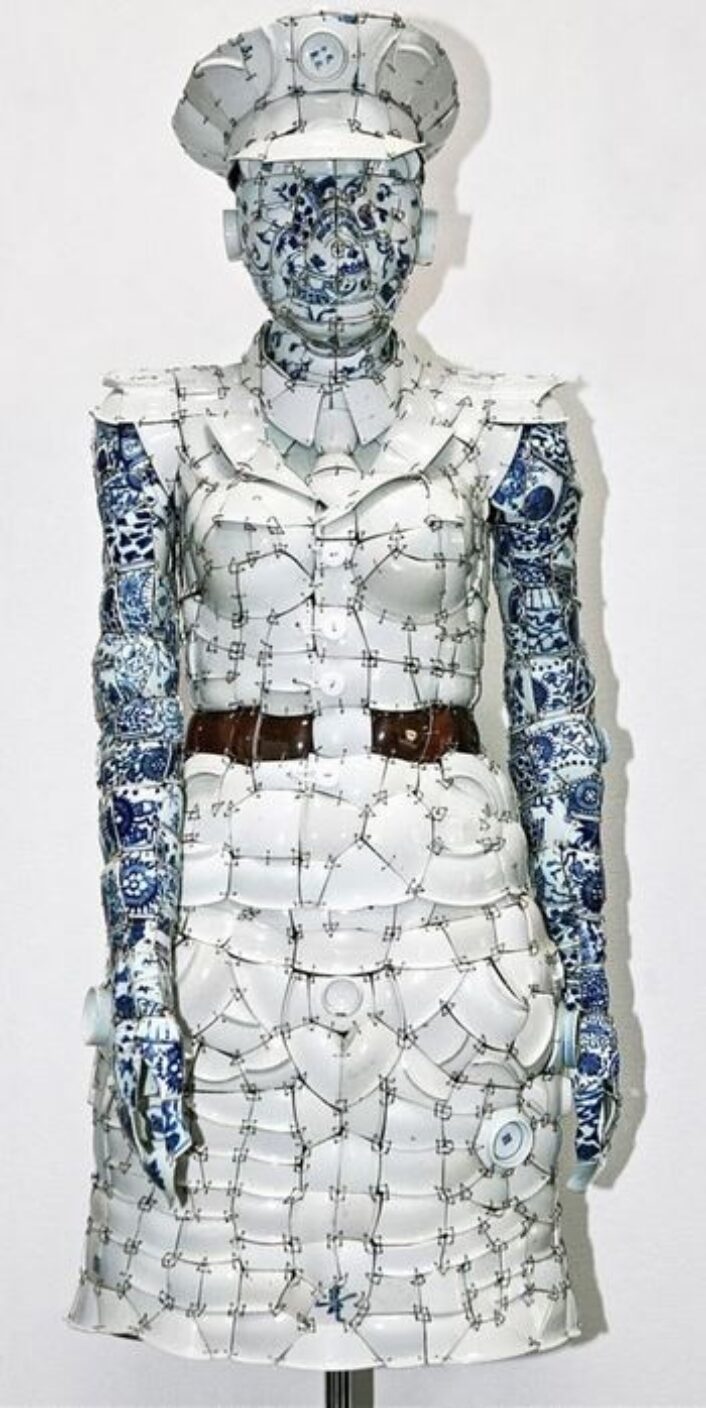Archive
Portugal’s Blue & White Runneth Over
If you have ever been to Portugal, especially Lisbon, you will have undoubtedly marveled at the beautiful tiles on the exterior of buildings. Blue and white colors are predominately featured, however, yellow and a greenish gold are also common.
The tiles, called azulejos, take their name from the Arabic word az-zulayj which means “small polished stone.” Azulejos first came to Portugal in the 15th Century when areas of the Iberian Peninsula were under Moorish rule. Azulejos enjoyed a boom of popularity during the 18th and 19th Centuries.
Azulejos began as simple geometric tile designs. Then the designs transformed and began to tell cultural stories of Portugal. The azulejos even depict elaborate religious scenes.

A tiled portico in São Lourenço, Portugal. Image courtesy of Pinterest.
Many countries and cultures use tile art. However, in Portugal the use of azulejos has become part of the building facades and is used as an architectural material in addition to the added decoration they provide. There are even contemporary examples of azulejos in the metro stops!

A stop with contemporary azulejos at the Metropolitano de Lisboa subway stop. Image and details courtesy of BBC Travel.
If visiting Portugal one can learn more by attending Portugal’s National Azulejo Museum. This museum is housed inside a former church and cloisters and 16th Century Madre de Deus Convent. As we’ve shared before, visiting this museum is definitely on our bucket list!
The enormous azulejos collection is organized chronologically in rooms. Visitors to the museum will be able to view the process of tile-making from its Moorish beginnings to more contemporary artistic interpretations.
We hope to visit Portugal’s National Azulejo Museum soon and share our pictures and impressions!
